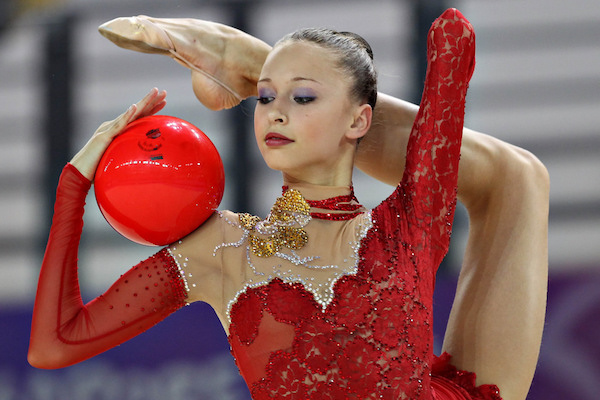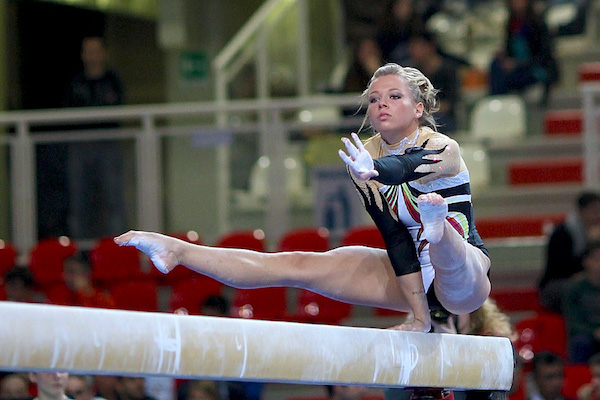All About Rhythmic Gymnastics & Trampoline
Rhythmic Gymnastics and Trampoline are two often forgotten outgrowths of Olympic Gymnastics. If the story of regular (officially called Artistic Gymnastics) is one of an increasingly athletic arms race, Rhythmic Gymnastics is what would have happened to the sport if it had gone in the other direction. It rewards grace and beauty over strength and forceful athleticism. Trampoline goes in the other direction. It starts with the question, “what if we gave gymnasts a virtually infinite ability to jump” and goes from there.
How Does Rhythmic Gymnastics & Trampoline Work?
Rhythmic Gymnastics, like Artistic Gymnastics, has a number of apparatuses: hoops, ribbon, ball, and clubs. Each of these is a prop that can be used by rhythmic gymnasts in 75 or 90 second floor routines. Each apparatus has its own skills and each emphasizes a particular element of the gymnast’s movement. Rhythmic gymnasts are scored by two panels of judges, one assessing at the difficulty of the routine and one looking at how well executed each movement in the routine is. In Trampoline Gymnastics, gymnasts do routines that are limited to no more than ten jumps on a giant trampoline. Judges score the routines like Rhythmic Gymnastics, on difficulty and execution, but with an additional element of hang time. Trampoline competitors are rewarded for total time spent in the air, which can exceed 18 seconds!
Why do People Like Watching Rhythmic Gymnastics & Trampoline?
Rhythmic gymnastics has a lot to recommend it to television viewers. These athletes use their bodies and their apparatuses together to create beautiful patterns. They’re also amazing athletes in their own right. You can easily get distracted by the flowing ribbon, but if you keep your eye on the gymnast, you’ll see strength and flexibility being tested to its full extent — every bit as much as in other events. Watching trampoline is like watching diving but without all that boring setup between dives. Imagine ten consecutive dives with all of their tucks, rolls, swivels, and summersaults!
Check out some highlights from the 2012 Olympics:
What are the different events?
Rhythmic Gymnastics has a team and an individual event. Trampoline has men’s and women’s events.
How Dangerous is Rhythmic Gymnastics & Trampoline?
Safe. Trampolines are notoriously dangerous when used by laypeople, usually children or teenagers. At the Olympic level, they’re much safer than that. There aren’t any faulty springs and the trampoliners are not going to go flying into the shrubs. Rhythmic gymnastics is also very safe. Not that I’d try to do any of those moves, but still.
What’s the State of Gender Equality in Rhythmic Gymnastics & Trampoline?
Trampoline is perfectly balanced and Rhythmic Gymnastics is perfectly unbalanced — only women compete in Rhythmic Gymnastics.
Links!
Bookmark the full Olympics schedule from NBC. Rhythmic Gymnastics & Trampoline is from Friday, August 12 to Sunday, August 21.
Read more about these events on the official Rio Olympics site for Trampoline and Rhythmic Gymnastics.


